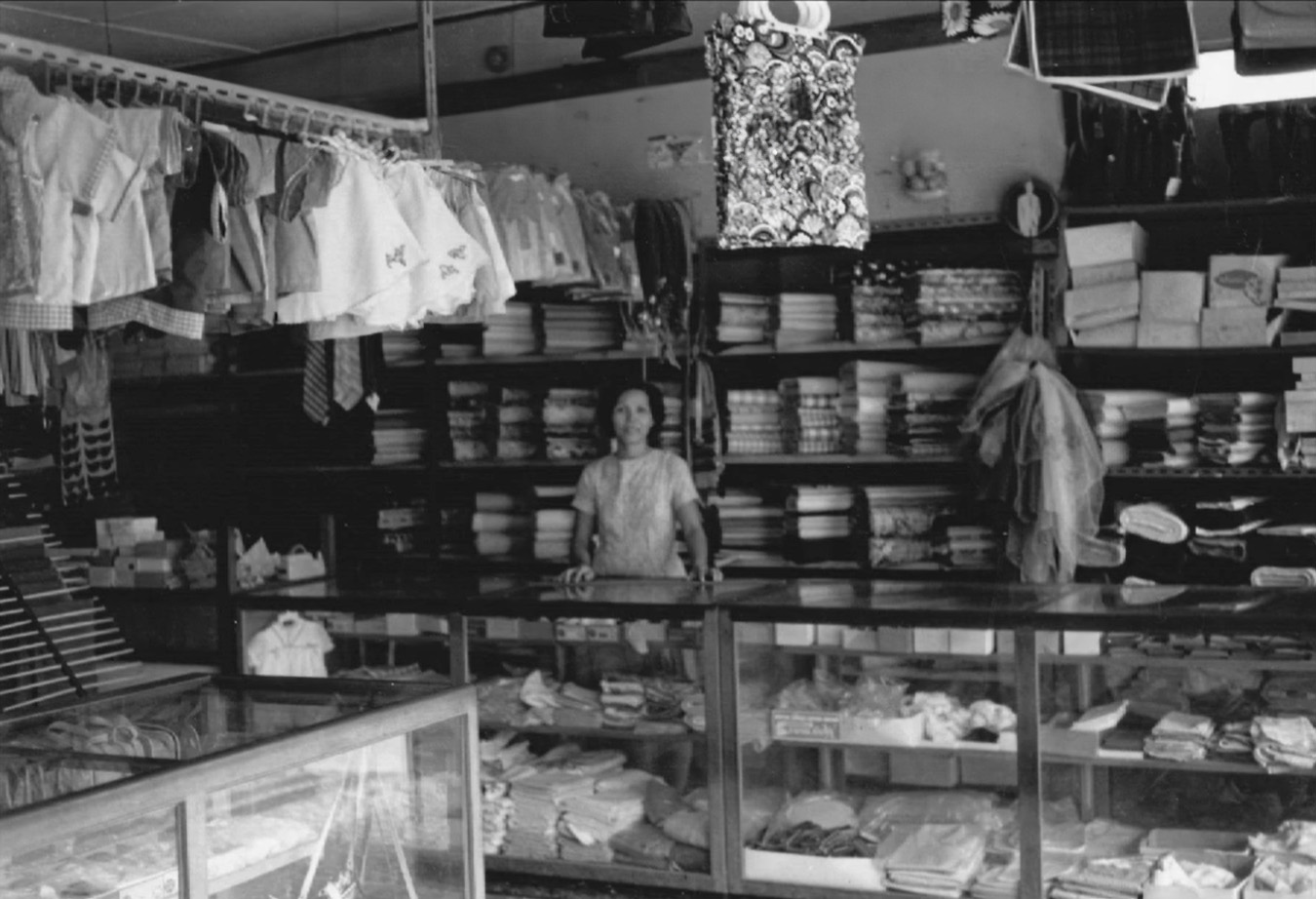
These days, it’s impossible to miss the dazzle and drama of downtown Kingston’s mannequin displays. They crowd the sidewalks and fill the stores. At early morning—shops still shuttered, the crowds not yet out and about—stray mannequins lie naked, strewn here and there, broken arms and dented breasts showing the wear-and-tear of hard work, or neglect, or perhaps the previous night’s carousing. But by midday, the able-bodied among them, decked out in the hottest seasonal fashions, stand smartly upright and working.

What’s striking is the “massive,” not so much the individual models. Unlike the sparingly arranged shopwindows of North Atlantic cities and Kingston’s uptown stores, where individual models call attention to themselves dramatically posed behind glass walls, these downtown mannequins occupy shared space with the crowd, you can reach out and touch them. The show is all about overabundance and excess, an oversaturation of color, a wild voluptuousness of form.
The models, always young, many of them headless, mostly white, are often yoked one to another when standing outdoors, presumably to prevent them falling accidentally or being stolen. Chained together, they present an odd postmodern throwback to the slave coffle. Whether slim or full-bodied, the women’s derriere and breasts are always prominent, and the men (fewer of them than there are women), are slim, and tightly built.

Besides being elegantly draped onto mannequin molds, clothing is also displayed on coat hangers and wire-framed figures—lighter in weight, locally fabricated and less expensively acquired. Arranged in tiers, two, three, or more stories high, the wire figures and hangers are suspended at the upper levels from hooks, door frames, or lines strung along walls and storefronts or across street and lane: drawing the gaze of passersby upwards to view these mesmerizing displays of street art.
Mannequin-fashion has also completely transformed the interior design and layout of downtown stores. In days gone by, wholesale and retail haberdasheries and clothing stores were furnished with sturdy, waist-high, rectangular cabinets arranged parallel to the side and rear walls of the store. Bales of fabric were stacked colorfully on shelves along the walls. The cabinets served as storage and display space for sewing supplies and other small items, and their wooden or glass countertops as surfaces for attending clerks to cut fabric-to-order or display merchandise for the inspection of customers. Nowadays there are very few cabinets; instead, rows or clusters of mannequins dominate the retail floor space.

These visible shifts in the streetscape and interior configuration of downtown stores also tell the story of the near-complete elimination of the local, artisanal production of clothing and items of home décor over the past fifty years. The new aesthetic speaks to the takeover—in this neoliberal free-trade era—of Jamaica’s once thriving custom-made clothing industry, as cheaper, imported, factory-produced goods now inundate the market. In earlier decades, women of all social levels had their dress and work clothing custom-made by skilled designers and dressmakers; children’s school uniforms were frequently made-to-order, and many men had their suits and pants tailored. Curtains and draperies for the home were often custom-made, as were embroidered or crocheted hand towels, tablecloths, pillow covers, antimacassars, and other utilitarian and decorative items. Designers, seamstresses, and tailors operated from their homes or from small shops, employing one or two assistants or apprentices. These small businesses were everywhere.
Alas, those skills and times are long gone, and with them the theatre and artistry of downtown Kingston’s streets and lanes have also been transformed.